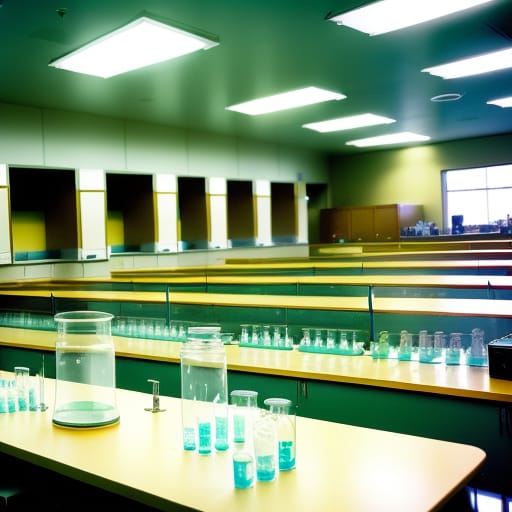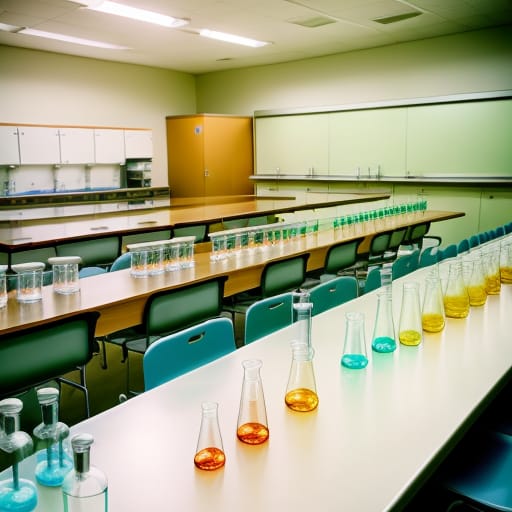Crystal growing kits are a fun and educational way to introduce children and students of all ages to the wonders of science. With these hands-on learning tools, young scientists can grow their own colorful crystals while learning about chemistry, mineralogy, and other scientific fields. If you’re looking for an engaging science activity or want to enhance science education, then crystal growing kits are a perfect option!

What Are Crystal Growing Kits?
Crystal growing kits contain the materials and instructions for growing your own crystals at home. The main components are:
- Crystal-forming chemical compounds like alum, citric acid, salt, or plaster. These serve as the basic building blocks for crystal formation.
- Seed crystals – tiny pieces of the crystal material that initiate crystal growth by providing a template.
- Containers like jars, plastic growing chambers, or petri dishes to hold the crystal solution while crystals form.
- Tools like droppers, tongs, and mixing implements used in the crystal growing process.
Kits will also include detailed instructions to walk you through the process step-by-step. Most provide enough materials to grow multiple batches of crystals in different shapes and colors.
The Science Behind Crystal Growing Kits
The science of crystal growing kits lies in chemistry and mineralogy. Here’s a quick overview of the key scientific concepts:
- Solubility – How much of a substance will dissolve in a liquid solvent. Solubility increases with temperature.
- Supersaturation – A highly concentrated solution containing more dissolved crystal material than is normally possible at that temperature.
- Crystallization – The process by which molecules align in an organized lattice structure and solid crystals begin to form.
- Nucleation – When dissolved particles start clustering around “seed” sites, initiating crystal growth.
- Precipitation – The formation of solid crystals as molecules come out of solution. Crystals grow larger as more particles attach.
- Symmetry – The ordered arrangement and repeating geometric patterns of crystals based on their internal molecular structure.
Understanding these basic principles allows you to grow perfect crystalline structures and appreciate their unique forms.
Why Use Crystal Growing Kits for Science Education?
Crystal growing kits provide a wealth of educational benefits when used for science learning:
- Hands-on learning – Active participation strengthens understanding and retention.
- Seeing science in action – The visual process shows abstract concepts in action.
- Learning by experimentation – Trying different variables and analyzing results.
- Appreciating natural beauty – The symmetry and colors of crystals are visually stunning.
- Interdisciplinary learning – Crystals tie into chemistry, physics, math, art, and more.
- Real-world connections – Crystals are used in electronics, jewelry, medicine, and technology.
- Fun and engaging – It feels like play but builds science knowledge.
Crystal kits are inexpensive, safe for young ages, and great for individual or group learning. The process fosters critical thinking, patience, attention to detail, and problem-solving skills.
Examples of Educational Crystal Growing Kits
There are a variety of excellent crystal growing kit options for educators and students:
Crystal Science Crystal Growing Lab Kit
- Best overall kit with 15+ growing experiments
- Grow crystals of alum, salt, plaster, citric acid
- Start with seed crystals for guaranteed results
- Full color manual with experiments and science background
Price: $21.99
Green Science Crystal Growing Lab
- Grow colorful salt crystals and towers
- Reusable plastic growing chamber
- Includes magnifying glass for observation
- 16 page learning guidebook
Price: $19.99
Thames & Kosmos Chem C3000 Crystal Growing Lab
- Over 400 pieces and 30 activities
- Grow 18 different crystal shapes and structures
- Advanced kits for older students
- Full color 30+ page manual
Price: $34.99
Elenco Crystal Growing Science Kits
- Grow blue alum crystals
- Includes plastic growing chamber
- Simple process for younger kids
- Basic background guide
Price: $14.95
There are also bulk kits with enough materials for classroom-sized groups. Having enough tools for each student to work hands-on is ideal.
Crystal Growing Experiments to Try
The specific scientific method will vary, but the basic process involves:
- Starting with a highly concentrated hot solution of the crystal material
- Allowing the solution to cool to reach supersaturation
- Placing seed crystals or objects to serve as nucleation points
- Waiting patiently as crystals slowly form on the seeds over hours or days
- Analyzing the results and shape of your unique crystalline structures
Here are some of the most common crystal growing experiments:
- Salt crystals – Table salt (NaCl) dissolved in water forms cubic crystals. Vary the water temperature and saturation level to get different shapes.
- Alum crystals – Aluminum potassium sulfate forms octahedral crystals. Add food coloring for colored crystals.
- Borax snowflakes – Dissolve and partially freeze borax solution to get glassy, snowflake-like forms.
- Plaster of Paris crystals – Calcium sulfate crystals have a rocky, cauliflower shape.
- Epsom salt – Magnesium sulfate crystals take spike-like shapes.
- Sugar crystals – Boil a supersaturated sugar solution to crystallize into cubes.
- Urea crystals – Long spear-like shapes can form if the solution cools slowly.
The key is to let students experiment with different chemical solutions, saturation levels, seed materials, and crystal growth setups to observe the results. This trains them in the scientific method.

Incorporating Crystal Growing into Science Lessons
Crystal growing makes an engaging science activity to incorporate into standard science curriculum and lesson plans:
Elementary School
- Teach symmetry and geometry – categorize crystal shapes
- Observe crystal formation across days or weeks
- Tie into geology and rock types
Middle School
- Study chemistry – solutions, solubility, precipitation
- Practice lab procedures – measuring, mixing, safety
- Grow different crystal types – compare crystal structures
High School
- Physical science – supersaturation, crystallization, purification
- Chemistry – molecular polarity, ionic vs covalent bonds
- Physics – crystallized structure affects thermal/electrical conductivity
At Home
- Set up a crystal growing station for ongoing science discovery
- Launch a science blog where kids document the projects
- Make it a family science activity – share the learning
Growing crystals allows students to see chemistry, physics, math, and natural processes in action. Crystallization is also critical in industry and technology. The applications are limitless!
Top Tips for Growing Quality Crystals
Follow these tips to boost your chances of growing large, perfectly formed crystals with your kits:
- Carefully measure solutions according to instructions
- Use distilled water for high-purity
- Avoid vibration or movement during growth
- Maintain a consistent warm temperature
- Use containers that minimize evaporation
- Gently wash seeds to remove imperfections
- Growth can take hours to weeks depending on the variables
- Keep detailed notes in a science journal
Patience and precision are key. Don’t get discouraged if your first crystals have flaws. Part of the learning process is analyzing results and trying again while tweaking your methods.

The Magic of Crystals
The natural beauty of crystalline structures is mathematically precise yet artistically dazzling. As educational tools, crystal growing kits provide an excellent way to engage children of all ages in the wonder of science. The hands-on process allows them to see chemistry concepts come to life as they create sparkling works of art. Young scientists will love documenting the experimentation process and unveiling their unique crystalline creations.
So why not foster an early interest in science and teach the fundamentals of chemistry and physics in an enjoyable, interactive way? With the right crystal growing kit, students of any age can discover the science behind these transfixing gems!
Frequently Asked Questions
What are the best crystal growing kits for beginners?
Some good beginner crystal growing kits are the Crystal Science Crystal Growing Lab Kit, Green Science Crystal Growing Lab, and Elenco Crystal Growing Science Kits. These include basic materials and instructions to start growing fundamental crystals like salt and alum.
What types of crystals can you grow at home?
Some common crystals you can grow with home kits include salt, alum, borax, Epsom salt, sugar, and plaster of Paris. More advanced kits allow you to grow over 18 different crystal types.
How long does it take crystals to form?
Crystal growth can take from hours to weeks depending on the solution saturation, temperature, seed materials, and other conditions. Patience is required as molecules slowly align into orderly structures.
Is it hard to get seed crystals to form?
Quality seed crystals are key for initiating the crystal lattice framework. Many kits include pre-formed seeds to ensure successful crystal growth. Proper cleaning and preparation of seeds help produce flawless crystals.
Can I grow colored crystals with kits?
Yes, you can grow beautifully colored crystals by adding food dye or other pigments to the crystal solution. The color gets incorporated into the molecular lattice as the crystals form.